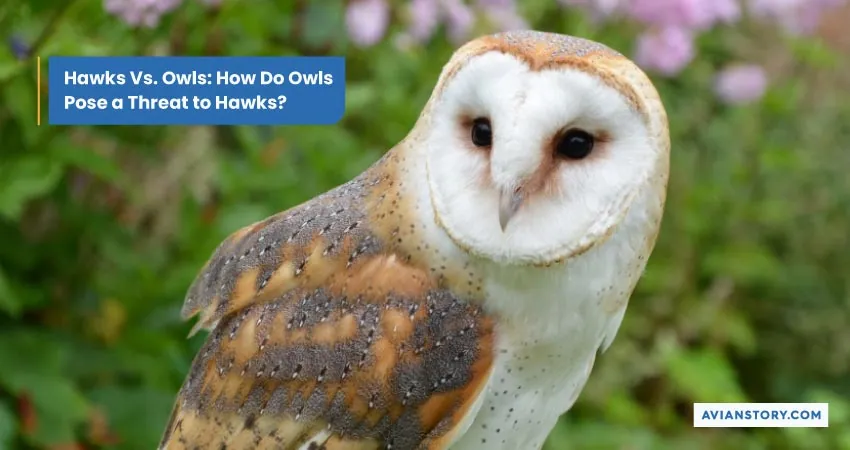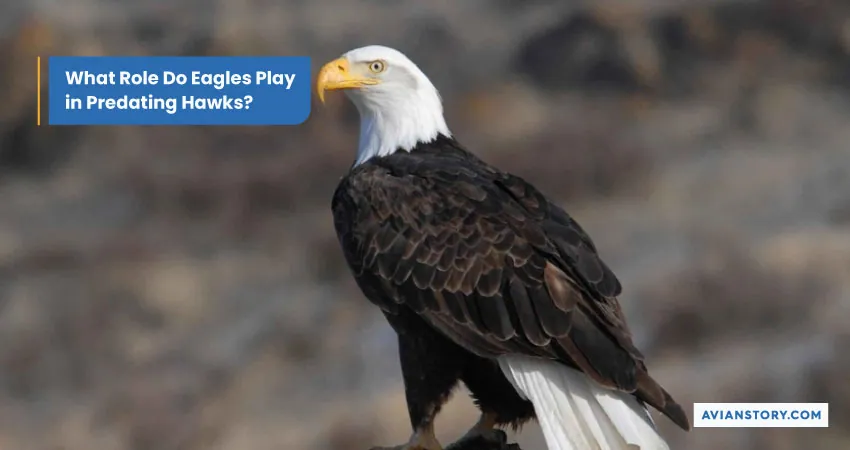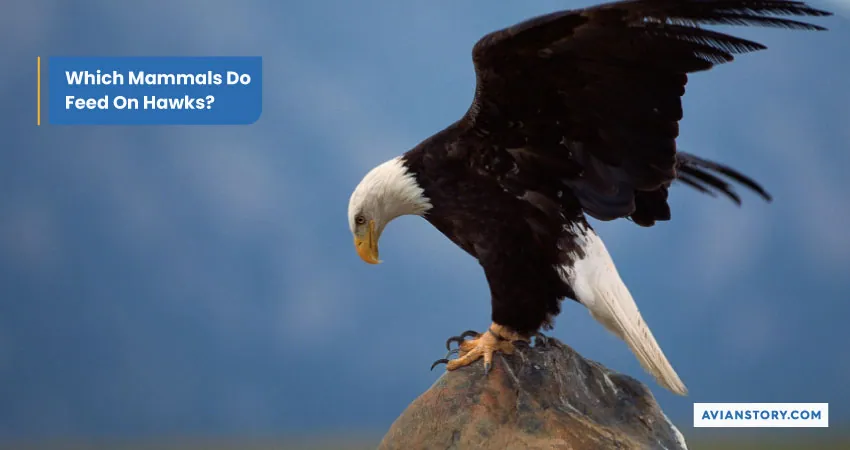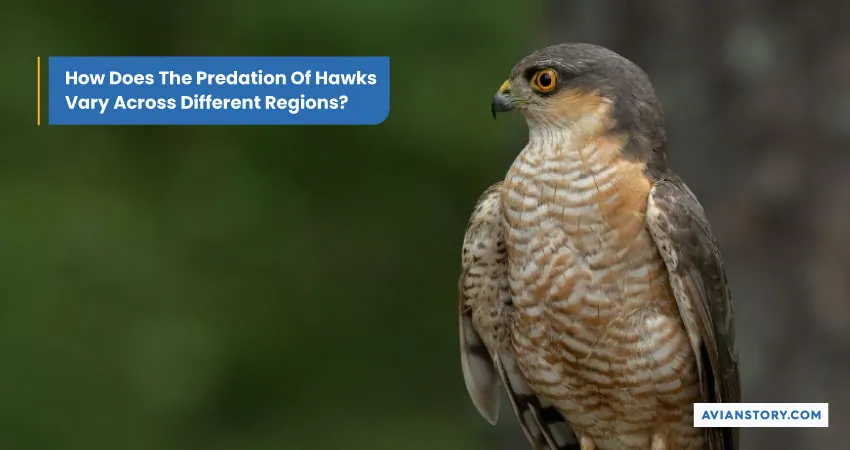8 Hawk Predators: What Animal Eats a Hawk
Hawks are amazing birds that are exceptionally good at flying at great altitudes, spotting objects from great distances, and catching their prey. However, even though hawks are skilled hunters, they still have to watch out for other animals that could hurt or kill them.
So, what animals eat hawks? There are numerous predatory species in nature that can occasionally threaten hawks, including the following.
- The Golden Eagle
- The Great Horned Owl
- Bald Eagles
- Peregrine Falcons
- Coyotes
- Foxes
- Bears
- Snakes
In this article, we will explore several fascinating hawk facts regarding what animals eat hawks. Alongside this, we will discuss various predatory strategies and whether or not hawks are endangered. So let’s begin.
What Animals Eat Hawks? An In-Depth Look
Hawks are exceptional hunters, and research conducted by the Searchable Ornithological Research Archive at The University of New Mexico, focusing on three pairs of Red-tailed hawks, confirmed this fact. For more than 500 hours, researchers observed the birds’ hunting techniques and found that they successfully caught their intended prey 78.8% of the time.
However, hawks occasionally might end up as prey for other creatures. We have listed the predators of Hawks with several categories.
| Category | Animals |
| Falcons | Peregrine Falcon |
| Gyrfalcon | |
| Merlin | |
| Snakes | Corn snakes |
| Kingsnakes | |
| Rattlesnakes | |
| Twig snakes | |
| Spider-tailed horned viper | |
| Owls | Great Horned Owls |
| Eurasian Eagle-Owls | |
| Barred Owls | |
| Mammalian Predators | Bobcat |
| Fox | |
| Raccoons | |
| Cats | |
| Coyote | |
| Large Birds of Prey | Golden Eagle |
| Bald Eagle | |
| Wedge-tailed Eagle | |
| Other Predators | Gray Wolf |
| Ravens | |
| Porcupines |
Larger Birds of Prey
Hawks could become prey to bigger birds of prey. For example, some eagles, such as the Golden and Wedge-tailed eagles, have been observed attacking and killing hawks. This usually occurs when these birds are competing for resources or fighting over their territories.
Owls
Owls and hawks usually hunt different types of prey, but sometimes owls can attack and even kill hawks. This occurs when owls sense danger or want to defend their nests or territories.
Additionally, a study from The Wilson Bulletin showed that Great horned owls and Red-tailed hawks share the same habitats and have overlapping diets around 50% of the time. As a result of their competing for resources, Great Horned Owls may prey on hawks.
Raptors and Falcons
Sometimes, other raptors and falcons may attack hawks, but this is quite uncommon. Such situations usually arise when there is intense competition for limited food resources. When different bird species of prey interact, they may end up preying on each other at times.
Mammalian Predators
Hawks are primarily at risk from other birds, although some mammalian predators can also be dangerous to them. In most cases, young or injured hawks have been known to fall victim to large carnivores like foxes, coyotes, and bobcats.
Hawks Vs. Owls: How Do Owls Pose a Threat to Hawks?

Do you know owls are nocturnal creatures, and they mainly hunt at night or early in the morning? Owls generally look for their prey while sitting in a high place, such as trees, buildings, and poles, paying close attention to their movements.
Brian E. Washburn, a Research Wildlife Biologist at the National Wildlife Research Center in Sandusky, Ohio, suggests that the unique serrated feathers of owls muffle the sound of their flight, allowing them to silently approach their prey. When they find their target, they dive down with precision and capture it using their sharp talons.
Owls mainly hunt small animals, birds, and reptiles. Although hawks are fierce hunters, too, they are not safe from being hunted by owls. This is because some species of owls, such as the Great Horned Owl, have been seen preying on Red-tailed hawks, Cooper’s hawks, peregrine falcons, young osprey, etc.
The Great Horned Owl uses its strong talons to overpower the hawk, sometimes causing its death. Other owl species, like the Northern Spotted Owl and Barred Owl, have also been recorded hunting and killing hawks like the Northern Goshawk and Red-tailed Hawks.
What Role Do Eagles Play in Predating Hawks?

Eagles are powerful hunters that possess impressive flying skills and strong talons. They generally eat rabbits, fish, or ducks as well as larger prey like large birds, deer, or antelope.
Eagles hunt by searching from great heights. When they identify a target, they swoop down at an incredible pace and use their sharp talons to grasp and kill their prey. Eagles prefer to hunt alone and are more likely to hunt in open areas or near bodies of water where prey is available.
A study conducted by researchers from the School of Animal & Microbial Sciences at the University of Reading found that eagles tend to forage at different times depending on the breeding season. In early April and late September, they mostly forage at midday. However, during May to August breeding season, they prefer mornings for foraging and may do some in the afternoon.
Eagles have been noted preying on hawks in many instances. In Alaska, for example, there was an instance where a bald eagle attacked and killed a Red-tailed hawk while in the air.
According to eyewitnesses, the eagle managed to grab the hawk by the back of its neck, and after dominating it, it ate the hawk. Another example of a similar attack was captured on tape in Pennsylvania, where a bald eagle killed and consumed a Red-tailed hawk in mid-air.
Which Mammals Feed On Hawks?

Mammals do not usually hunt hawks, but in rare cases, some opportunistic mammals have been seen attacking or feeding on hawks. You should check out the list below to learn about the mammals that prey on or feed on hawks.
- Raccoon: Raccoons are known for being opportunistic predators that often target young and injured hawks. They may climb trees or access nests to capture the young hawks.
- Gray Fox: Gray foxes are quick hunters. They use their flexibility to approach the hawks discreetly, often hiding in concealed spots and ambushing them. They mainly prey on American Kestrels and Northern Harriers.
- Coyote: Coyotes are adaptive predators that use a combination of stalking, chasing, and cooperative hunting techniques to catch hawks. They mainly prey on Red-tailed Hawks, Ferruginous Hawks, and Swainson’s Hawks.
- Bobcat: They stalk hawks from a hidden place and use their talent for climbing trees to quickly and accurately pounce on their prey. They commonly prey on Red-shouldered Hawk and Northern Harrier.
How Can Snakes And Other Reptiles Feed On Hawks?

Did you know in a tragic incident in North-central Florida, a baby hawk fell prey to the deadly grasp of a Black racer snake? The incident was captured on camera, and it was easy to see that the limp bird had a Black racer snake tightly wrapped around its neck.
Snakes like pythons and king snakes wait near water bodies or trees to catch birds by surprising them. They try to grab and stop the bird’s movement with their strong coils once they are within reach. Once the snake has successfully caught the bird, it eats it completely.
In addition, if a snake discovers a hawk’s nesting site with eggs in it, the snake might take advantage of the opportunity to eat them.
How Does The Predation Of Hawks Vary Across Different Regions?

There are various factors that might affect how hawks are preyed upon in different geographic areas. These factors include the availability of prey, the nature of the habitat, and the presence of predators. Check out the information below for more details.
Predation of Hawks in North America
Red-tailed Hawk, Cooper’s Hawk, and Broad-winged Hawks are found in North America.
In North America, the Great Horned Owls and Golden Eagles are the primary predators of hawks and may target younger hawks or those that are not strong enough. Sometimes, bigger animals like coyotes and bobcats may also prey on hawks or their nests.
Predation of Hawks in Europe
Europe has different types of hawk species, like the Common Buzzard, Sparrowhawk, and Goshawk. In Europe, the Eurasian Eagle-Owl hunts baby hawks or injured hawks. There are also predators like foxes and martens that can harm adult hawks or their nests.
Predation of Hawks in Asia
Asia has lots of different types of hawks like the Oriental Honey Buzzard, Black Kite, Eastern Marsh Harrier, and many more. There are big birds like the Himalayan Golden Eagle and Steller’s Sea Eagle that can prey on these hawks. In some parts, tigers or leopards can also pose a threat to hawks.
Predation of Hawks in Other Regions
Hawks are in danger from several different animals in other parts of the world. For instance, Africa has the African Harrier-Hawk and the Black Kite, which could be hunted by other raptors like the African Fish Eagle or Martial Eagles.
In Australia, the Wedge-tailed Eagle and the Brown Goshawk may be unsafe around larger raptors like the White-bellied Sea Eagle. In South America, there are the Crested Caracara and the Roadside Hawk, which could also face danger from various raptors and mammals like jaguars or ocelots.
Preventive Measures To Save Hawks Population From Extinction

According to a research paper entitled “DECREASES IN A POPULATION OF RED-SHOULDERED HAWKS NESTING IN CENTRAL MARYLAND” conducted by The Raptor Research Foundation, Inc, it was revealed that the number of nesting pairs in a specific area decreased dramatically by at least 78% during the period from 1975 to 2002.
Furthermore, according to the Financial Tribune, researchers found that of the 557 raptor species they studied, 18% are endangered, and 52% have diminishing global numbers, making them more endangered than all bird species combined.
Therefore, it is imperative that we implement successful preventative measures to preserve the dwindling hawk population. You can adopt some of the preventive steps listed below.
- To help conserve hawks, the government needs to raise awareness among the public about their importance in the ecosystem.
- Scientists and biologists should conduct thorough research to identify the various factors behind the decline of hawk populations.
- Educate the public to maintain a respectful distance from hawk nests and foraging areas.
- It is also important to protect the prey animals that make up a significant portion of the hawk’s diet.
- Try to preserve natural habitats, such as forests, grasslands, wetlands, and coastal areas, which are critical for the survival of hawk populations.
Frequently Asked Questions
Check out the FAQs below to know more about the various animals that eat a hawk.
Do hawks eat other hawks?
Yes, larger hawks like the Goshawks species have been known to prey on smaller hawk species when they invade their territory.
Are there any hawk species that are immune from predators?
No. There are no hawk species that are immune to predation. However, larger and stronger species may be less vulnerable to predation.
What is the impact of pesticides on hawk populations?
Pesticides can have a severe impact on hawk populations, as they can cause a decline in prey populations, leading to a decline in hawk populations. Pesticides can also be directly toxic to hawks, causing illness and death.
Can human activities cause a decline in hawk populations?
Yes, human activities such as deforestation, industrialization, infrastructure development, climate change, and pollution can all contribute to the decline of hawk populations, as they can impact the availability and quality of hawk habitat.
Do hawks have any natural predators?
Hawks are at the top of the food chain in most situations and do not have any natural predators. However, as we already discussed, larger birds of prey, such as eagles and owls, may occasionally attack hawks.
How do hawks defend themselves against predators?
Hawks have several defense strategies. They include flying away from predators, attacking back using their talons and beaks, and even feigning injury or death to throw predators off their trail.
Are there differences in the types of animals that prey on hawks depending on their habitat?
The types of animals that prey on hawks can vary depending on the habitat. For example, in woodlands, owls could be the main predator, but in open grasslands, bigger birds of prey, such as eagles, could present a more significant threat.
Final Words
Several animals are known to prey on hawks in different circumstances. Predators like eagles, falcons, owls, foxes, and larger birds are some of the creatures that feed on hawks.
However, it is important to remember that each animal plays a vital role in the ecosystem. At the same time, predators play a crucial part in maintaining the balance of nature.
In addition, there are many factors that can affect hawk populations, including habitat loss, pollution, climate change, and pesticide use. Therefore, we should try to protect these beautiful birds and their habitats for the sake of ecological balance.
